In recent years, business exhibitions have undergone a transformative change, fueled primarily by the advent of virtual technology. This metamorphosis, accelerated mainly by the COVID-19 pandemic, has ushered in an era of virtual exhibitions, a concept that blends traditional exhibition strategies with the limitless possibilities of the digital world. These virtual exhibitions are not mere replicas of their physical counterparts but represent a new frontier in business engagement, networking, and marketing.
The onset of the COVID-19 pandemic served as a critical catalyst for this transition. As countries worldwide struggled with lockdowns and social distancing measures, the traditional expo model of large-scale, face-to-face business events faced an unprecedented challenge. The immediacy of this crisis demanded a rapid and innovative response from the business community, leading to the exploration and subsequent adoption of virtual platforms. In 2024, when physical interaction was limited, these digital arenas of online trade shows offer a secure, accessible, and cost-effective alternative.
At their core, virtual trade shows are immersive online environments where companies can showcase their products or services, engage with potential customers, and make new connections without traditional trade shows’ geographic and physical constraints.
This digital shift is not just a stopgap measure in response to the pandemic, but a fundamental rethinking of how business interactions and exhibitions can work in an increasingly digital world. The flexibility, reach, and innovative potential of virtual exhibitions have opened up new opportunities for companies to expand their horizons, connect with a global audience, and redefine the very nature of commercial exhibitions.
Business Benefits of Virtual Trade Shows

The emergence of virtual trade shows has revolutionized how businesses approach exhibitions, offering many advantages that extend far beyond the limitations of traditional, physical trade shows. These benefits range from expanded reach and reduced costs to enhanced interactivity and sophisticated data analytics.
Expanding Geographical Boundaries and Audience
One of the most significant advantages of virtual trade shows is their ability to transcend geographical barriers. In a traditional setting, the audience and participants are often limited by their ability to travel to the exhibition location. Virtual exhibitions, however, open the doors to a global audience.
Companies can now showcase their products and services to participants from different countries and cultures without physical travel. This broader reach not only enhances brand visibility on a global scale but also diversifies the customer base, leading to more inclusive and varied business interactions.
Cost Reduction

Virtual trade shows in 2024 will represent a cost-effective alternative to their physical counterparts. The expenses associated with organizing a physical exhibition – venue hire, travel, accommodation, setup, and dismantling costs – are significantly reduced or eliminated in a virtual environment. This cost efficiency of online trade shows allows smaller businesses and startups to compete in expos, democratizing the opportunity to showcase on a large scale using virtual trade show booths.
Flexibility and Scalability
The virtual format provides unparalleled flexibility in organizing exhibition spaces. Unlike physical venues, where space and layout are fixed, virtual platforms can be tailored to suit the specific needs of each exhibitor. This scalability allows for a more personalized exhibition experience, where businesses can adapt their virtual space to showcase their products or services best, regardless of their size or the complexity of their offerings.
Increased Interactivity
The integration of modern technologies like Virtual Reality (VR) and Augmented Reality (AR) has taken interactivity in virtual trade shows to new heights. These technologies create immersive and engaging experiences, allowing visitors to interact with products in a way that closely mimics physical interaction.
For instance, VR can transport visitors to a simulated environment where they can experience a product firsthand, while AR can overlay digital information onto the physical world, enhancing the user’s understanding and engagement with the product.
Effective Data Collection and Analytics

Virtual trade shows offer a unique opportunity for real-time data collection and analytics. Every visitor interaction, from the booths they visit to the products they spend time with, can be tracked and analyzed. The best virtual trade shows gather a wealth of data, providing exhibitors with valuable insights into visitor preferences and behaviors, allowing for more targeted marketing strategies and product development. Furthermore, this data can help in understanding the overall effectiveness of the exhibition, guiding improvements for future events.
In conclusion, the shift to virtual trade shows has opened up a new realm of possibilities for businesses. The ability to reach a wider audience, reduce costs, offer flexible and scalable exhibition solutions, increase interactivity, and gather valuable data has not only adapted the exhibition industry to the demands of the modern world but has also reshaped it for the better.
Technologies Underlying Virtual Exhibitions
Virtual exhibitions, like the best virtual trade shows, are supported by a number of advanced technologies, each of which plays a critical role in creating immersive, interactive, and impactful experiences. Virtual Reality (VR), Augmented Reality (AR), and 3D modeling are at the forefront of these technological innovations, fundamentally changing the way products and services are presented in the digital realm.
Virtual Reality (VR)
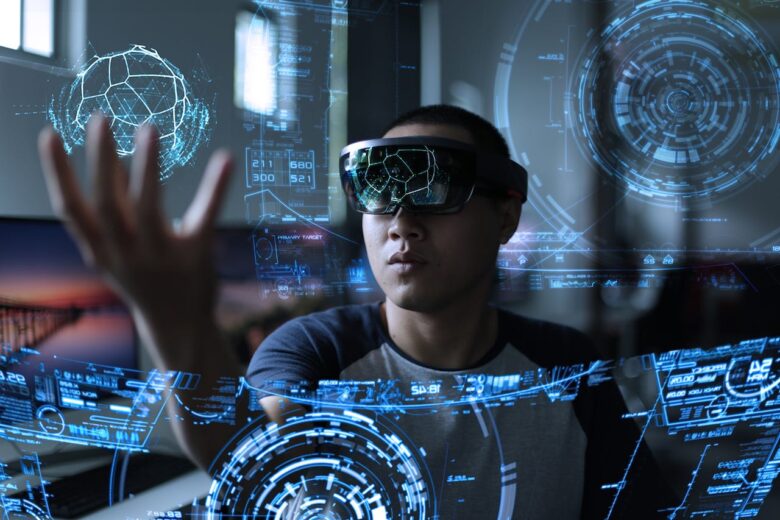
Virtual reality technology is a cornerstone of the virtual exhibit space. VR creates a fully immersive environment that removes the user from the physical world and transports them into a digitally constructed space. This technology allows exhibitors to create engaging, interactive worlds where visitors can experience products or services in a highly realistic manner. For example, in a VR-driven exhibit, a visitor can virtually test-drive a car, walk through a meticulously designed replica of a home, or interact with complex machinery. This deep level of interaction not only enhances the user experience but also provides a richer, more detailed understanding of the product.
Augmented Reality (AR)
Augmented Reality, unlike VR, merges the digital and physical worlds in the context of virtual expos. AR overlays digital information – such as images, data, or animations – on top of the real world, often through the use of smartphones or AR glasses. This technology employed in an online event enhances the perception of reality, allowing for a more interactive and informative experience in a virtual booth. In the context of virtual exhibitions, AR can be used to project products into the user’s environment, allowing them to see how a piece of furniture would look in their room or how a piece of equipment would fit into their workspace. AR provides a practical, engaging way for customers to interact with products in their own space, breaking down the barriers between the digital and physical worlds.
3D Modeling
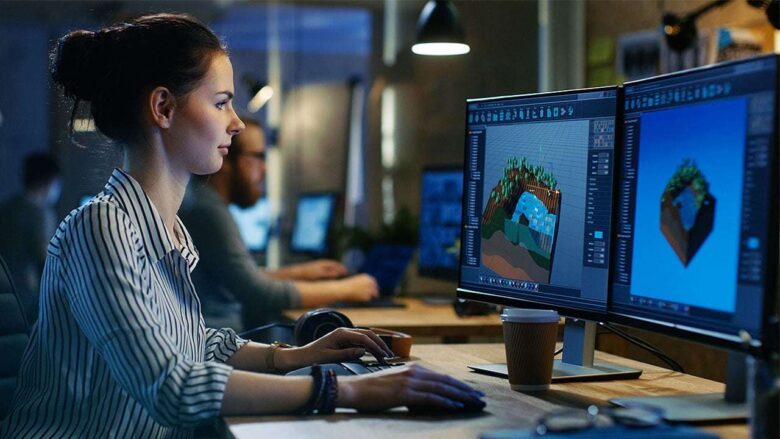
3D modeling is another key technology in virtual exhibits. It involves creating digital representations of objects or spaces that can be viewed and interacted with from any angle. For best virtual trade show participation, this technology is critical for showcasing products (through virtual booths) that are either too large, too complex, or too conceptual to display in a traditional exhibition setting. 3D models can be extraordinarily detailed, providing a lifelike representation of the product that users can explore in depth. This not only helps visualize products more effectively but also allows exhibitors to demonstrate the functionality and features of their offerings clearly and engagingly.
Together, these technologies form the backbone of virtual exhibitions, each contributing to a more immersive, informative, and interactive experience. VR immerses users in an entirely new world, AR bridges the gap between digital and physical, and 3D modeling provides a detailed and interactive representation of products. By harnessing the power of these technologies, virtual exhibits not only replicate the physical experience, but create a new, enhanced form of showcasing that could redefine the future of trade shows and exhibitions.
Virtual Trade Show Platform
LAI Live
LAI Live is a full-scale event production company specializing in live, virtual, and hybrid events. Based in Washington, DC, they offer services that encompass event planning, production management, and audience engagement for various industries. They are known for their comprehensive approach, managing everything from production management, content design to audiovisual logistics and event technology. LAI Live tailors its services to meet specific event goals, whether it’s increasing brand awareness, driving sales, or providing educational experiences. They work on a wide range of events, including corporate events, annual meetings, award shows, and galas.
vFairs
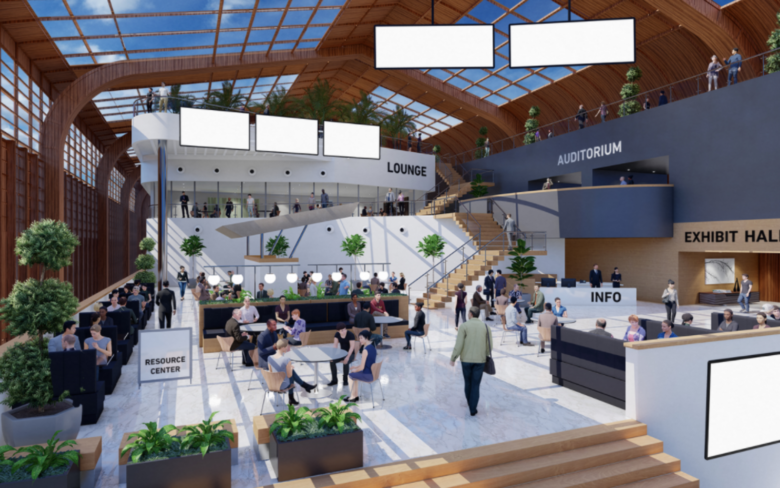
vFairs is a comprehensive platform specializing in virtual, hybrid, and in-person event management. It offers customizable solutions for various event types like conferences, job fairs, and trade shows, catering to a wide array of industries. The platform is known for its immersive 3D environments, providing features like virtual exhibit halls, webinars, networking opportunities, gamification, and real-time analytics. vFairs is designed to enhance attendee engagement and simplify event management.
MootUp
MootUp is an accessible 3D virtual and hybrid event platform that allows hosting of immersive events without the need for a VR headset. It is designed for a wide range of events, including virtual fairs, product launches, team building, and conferences. The platform supports a multitude of devices, including VR headsets, and offers features like customizable 3D avatars, interactive elements, and the ability to host large numbers of simultaneous users. It’s particularly suitable for businesses seeking a more engaging and interactive virtual event experience. MootUp integrates well with popular tools like Zoom, enhancing its utility for various event types.
Chati
Chati is a platform offering dynamic solutions for virtual and hybrid events. It emphasizes user-friendly and highly scalable event management for online events, making it suitable for businesses of various sizes. For online events, Chati stands out for its customizable trade show booths content templates, 3D virtual environments, and comprehensive virtual exhibit halls. It also provides detailed reporting and analytics for data-driven decision-making, along with seamless integration with popular tools. This platform is ideal for a range of industries seeking immersive event experiences.
Cvent Blog
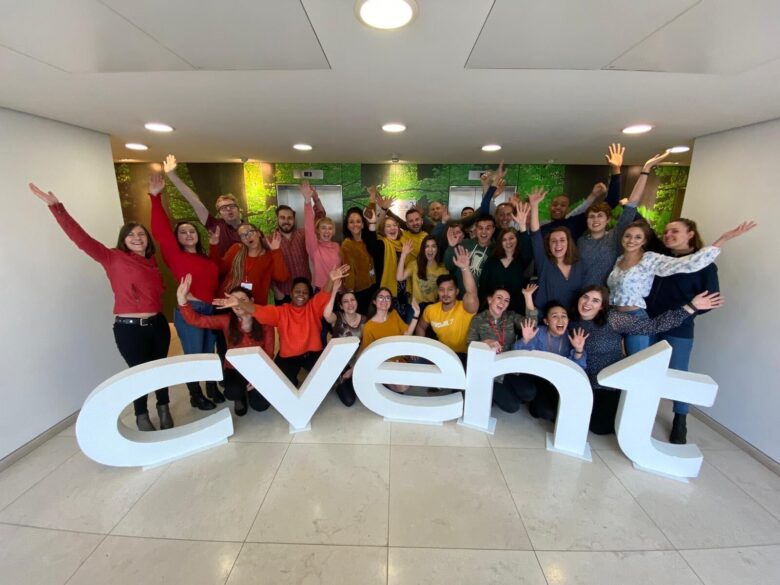
Cvent is a versatile platform offering solutions for managing in-person, virtual, and hybrid events, as well as webinars. It provides a range of services including event marketing and management, attendee engagement tools, analytics, and venue sourcing. The platform is designed for event planners, marketers, and organizations looking to streamline their event organization process. It integrates various aspects of event planning and management, offering tools for registration, attendee tracking, and engagement.
Slidefair
Slidefair is an avatar-based, highly detailed virtual event platform, enabling participants to navigate, present, interact, and network as they would in real-life events, all through a web browser. It facilitates one-on-one sessions, group conversations, and networking in a customizable 3D environment. This platform is suitable for a range of virtual events like fairs, congresses, and networking events. It offers features like customizable exhibition halls, meeting rooms, and presentation halls, enhancing attendee interaction and engagement. Slidefair is accessible from any computer with internet access, making it widely accessible.
The Future of Virtual Exhibitions and Upcoming Trends
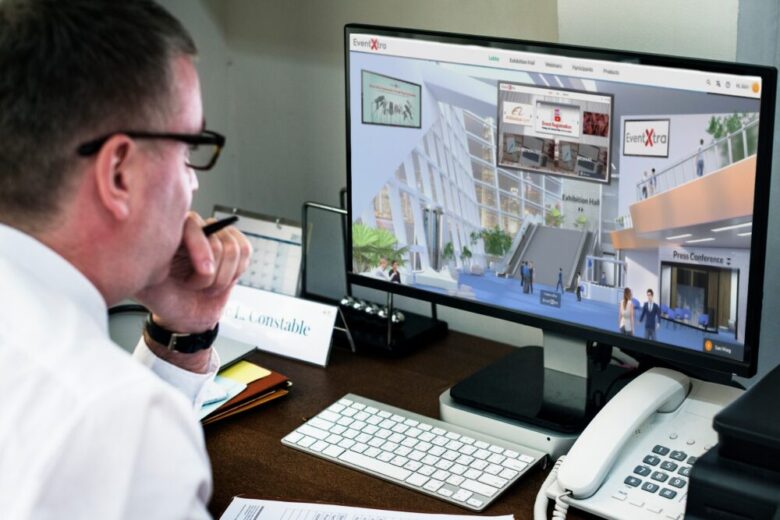
The future of virtual exhibitions will see significant changes, driven by the rapid evolution of technology and changing business needs. One of the most notable trends driving this evolution is the emergence of hybrid exhibitions that merge physical and virtual spaces.
Hybrid exhibitions represent the merging of the physical and virtual worlds. It is the integration of traditional elements of face-to-face expo with the innovative features of virtual booths on online platforms. Hybrid events allow participants who cannot physically attend to participate virtually, extending the reach of the event. Online events like virtual trade fairs also provide a safety net in situations where in-person attendance is limited, such as a health crisis or natural disaster.
The key to the success of hybrid trade shows is seamless integration, ensuring that virtual attendees can interact and participate in the event as effectively as in-person attendees. This requires advanced streaming technologies, interactive features, and platforms that can support large-scale simultaneous physical and virtual presence.
As technology advances, we can expect to see even more immersive and interactive features in hybrid exhibitions. Innovations such as advanced AR and VR capabilities, artificial intelligence-powered networking and meetings, and more sophisticated data analytics will become the standard, making these events more engaging, accessible, and valuable for companies and attendees alike.
In conclusion, the future of virtual trade shows is not just about replacing physical events, but enhancing and extending them with technology. Hybrid trade shows are proof of this, offering companies new ways to connect with audiences regardless of their physical location or circumstances.
Virtual exhibit audience engagement strategies
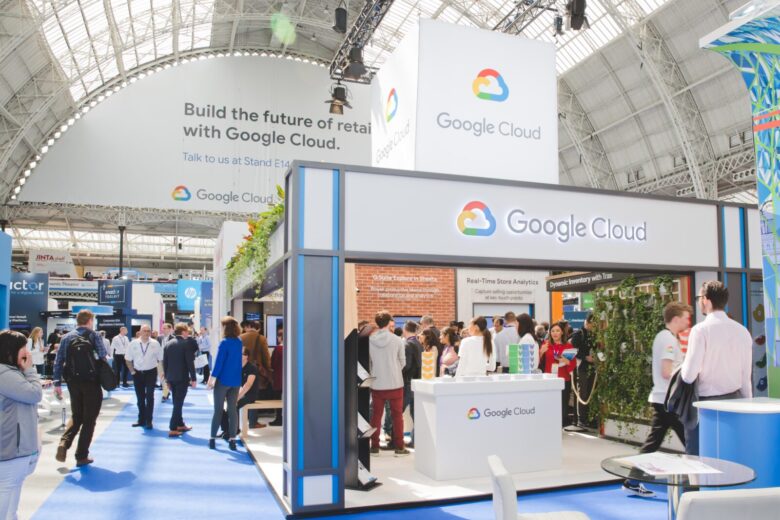
Attracting and engaging audiences for virtual exhibits requires strategic planning and innovative approaches. Here are some you can apply to your next event.
- Personalize content. Personalization is key to attracting and retaining audience interest. Developing content tailored to the preferences and interests of the target audience makes the experience more relevant and engaging. This can include personalized event programs, targeted product demonstrations, or customized communications. Using data analytics to understand attendee behavior and preferences can help create these personalized experiences.
- Webinars and workshops. Organizing educational sessions such as webinars and master classes on relevant show topics can significantly increase audience engagement. These sessions provide not only a basic show experience but also in-depth knowledge and insights. They also position the show as an industry thought leader, attracting professionals eager to learn and grow.
- Networking and Communication. Virtual exhibit platforms should provide reliable and convenient networking tools. Features like chat rooms, video calls, and networking lounges can facilitate interaction between exhibitors and attendees. Adequate networking opportunities are critical to business development, making virtual trade shows more attractive to exhibitors.
- Gamification. Incorporating gamification elements can make virtual trade shows more engaging and interactive. These can include tasks, quizzes, points, and rewards associated with attending or learning about the exhibit. Gamification in online trade shows adds fun and competition, encouraging visitors to engage more deeply with pre-recorded content and exhibitors.
By employing these strategies, virtual trade shows can create a more dynamic, engaging, and valuable experience for their audience, leading to more tremendous success and results.
Since hybrid events do not exclude a company’s physical participation in the event, they will need the services of an exhibition booth construction company. Such services include the design of an exhibition booth or space and the realization of this concept into reality. This combination of physical presence with an interactive experience of interaction with the brand will leave all visitors satisfied.


